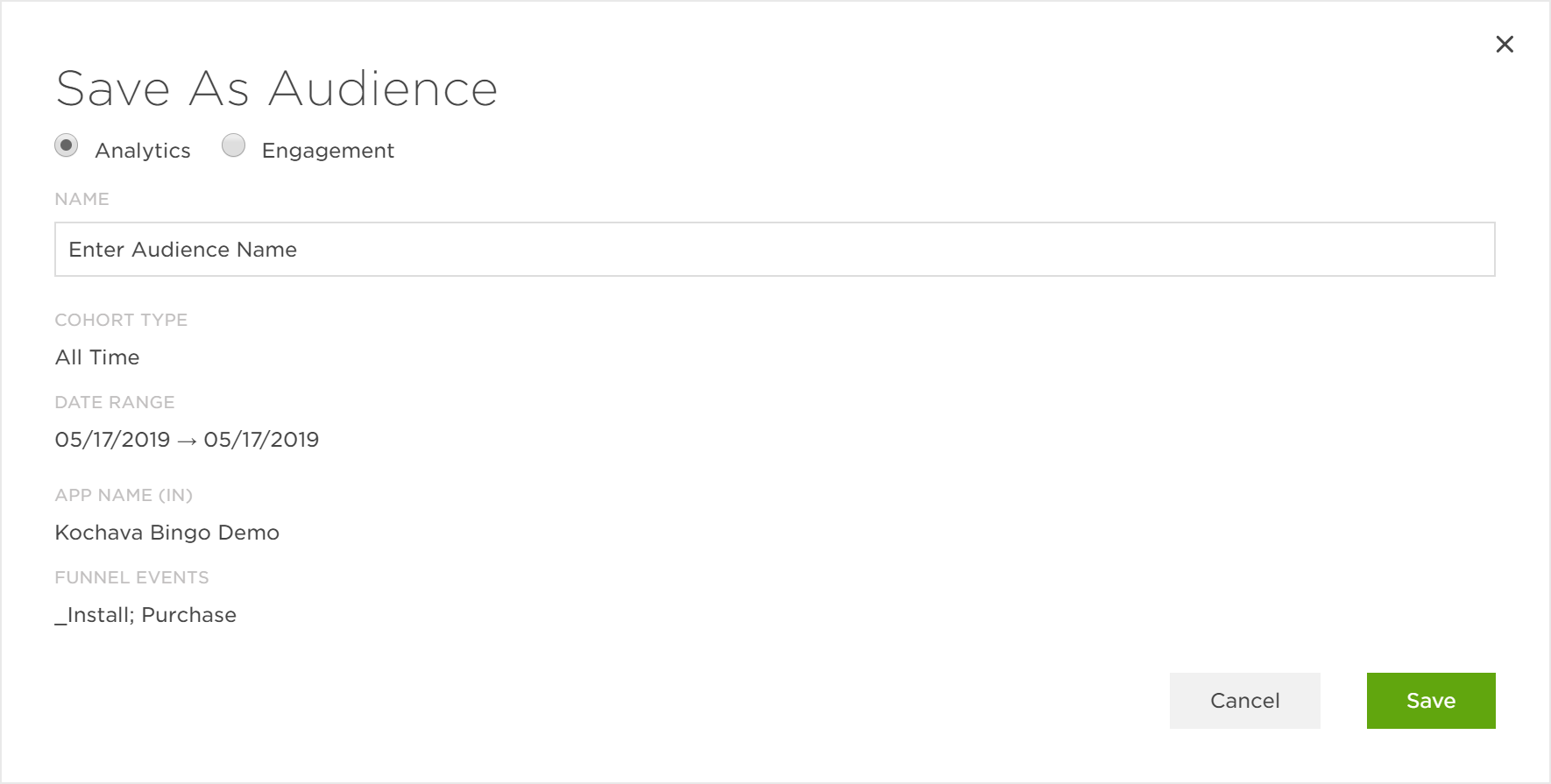Analytics Interface
- Log in to Kochava.
- Select the desired Account and App.
- Select Analytics > Funnel.
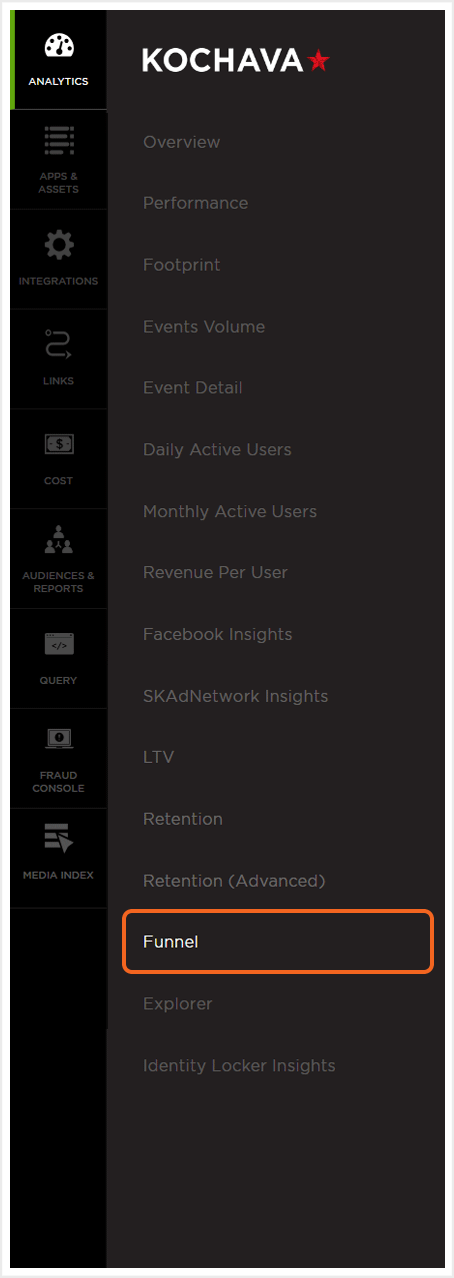
Analytics Page Tools
For more information on the tools available for this Analytic Page such as the date field, exporting audiences, sharing the page and applying Cohorts and filters, refer to our Analytics Page Tools support documentation.Filters
Filters can be used to further refine, organize and visualize the displayed data in a method that is most beneficial. Multiple filters can be added and saved for later use.
- Click Add Filter.
- App — Based on the available apps within account.
- Campaign — Based on campaign naming conventions.
- Device — Based on user agent.
- Events — Based on Standard or Custom events.
- Location — Based on IP address.
- Attribution — Based on attributed installs and campaign attribution settings.
- Agency — Based on the available apps within the agency account.
- Traffic Verification — Based on Traffic success or failure.
- Select the Filter drop-down menu, Select desired Filter.
- Add desired values.
- Click “X” to remove Filter.
Added filters may be inclusive or exclusive. Select from the following filters categories:
Once the filter category has been selected, one or more values may be added per filter. Filters can be saved and reapplied within any of the Analytics pages.
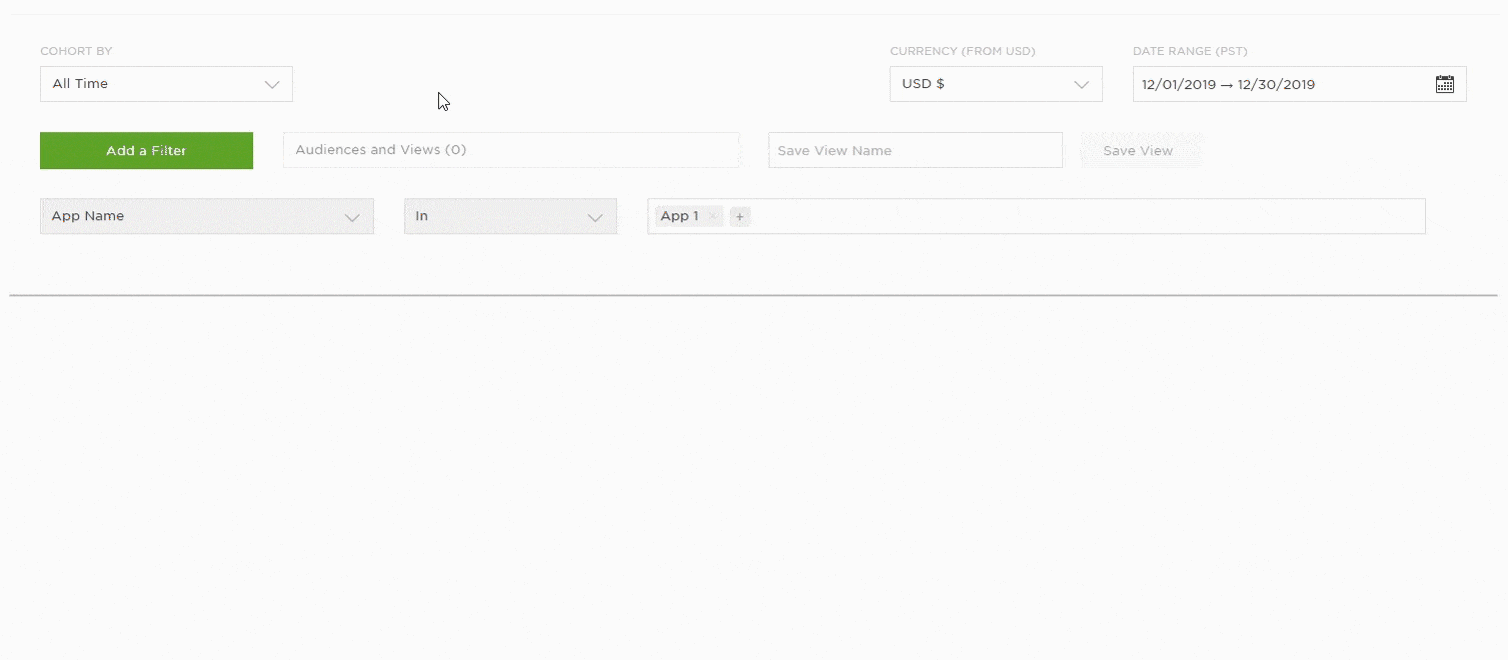
B. Click “+” to add metric
C. Click “X” to remove metric
D. Click “X” to remove Filter and associated Metric(s)
Save App Filters —
- Click the “X” to remove a value.
- Click “+” to add a value.
- Click Save View.
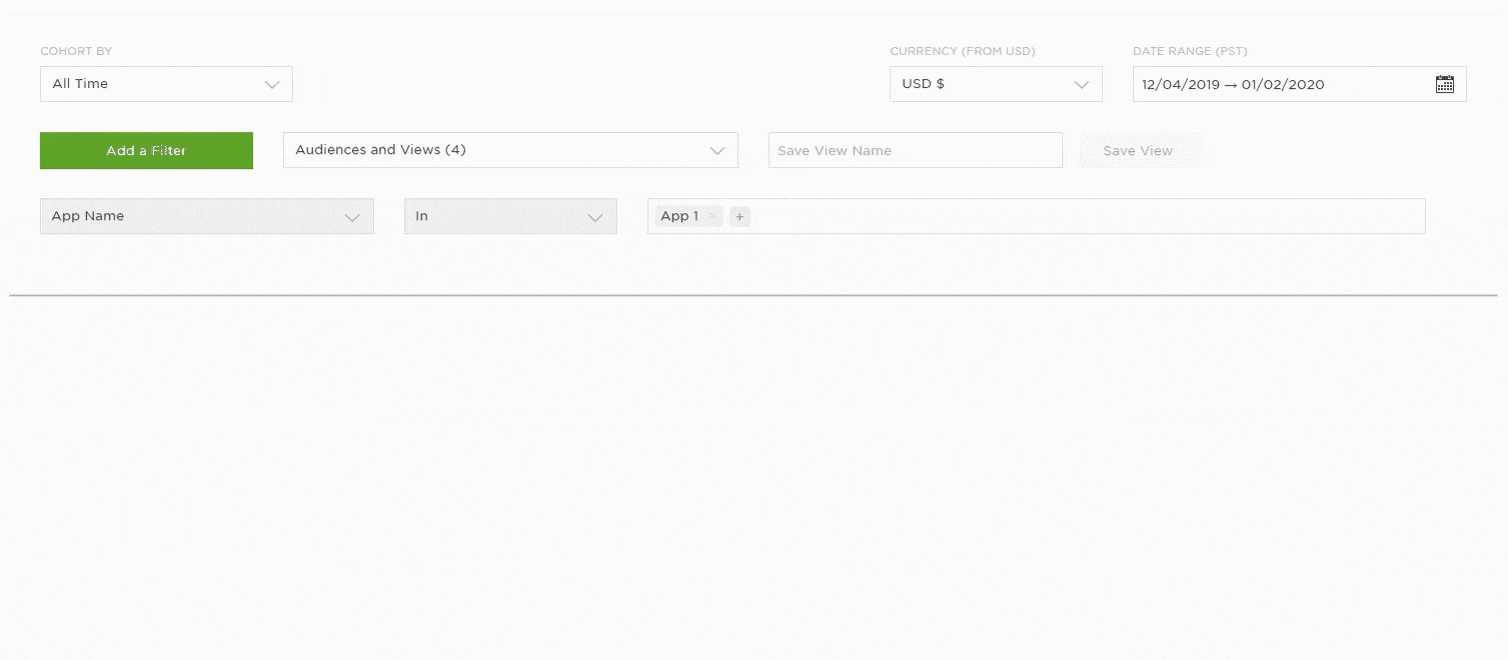
Selecting a Saved Filter —
- Select the Saved States drop-down box.
- Select the desired Filter Set.
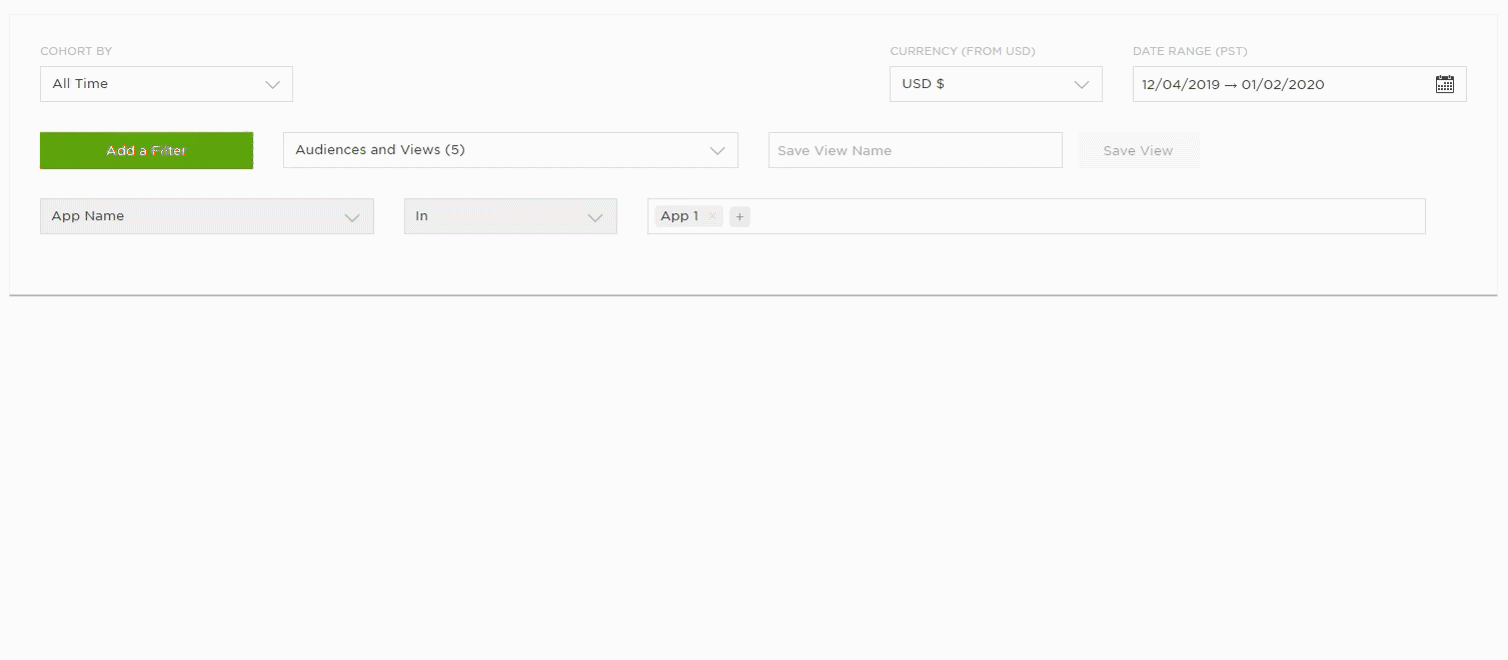
Deleting Filter Sets:
When saved Filter Sets are no longer needed, they can be deleted.
- Select the Saved States drop-down box.
- Select the desired Filter Set.
- Click “X” to remove.
- Click Proceed.
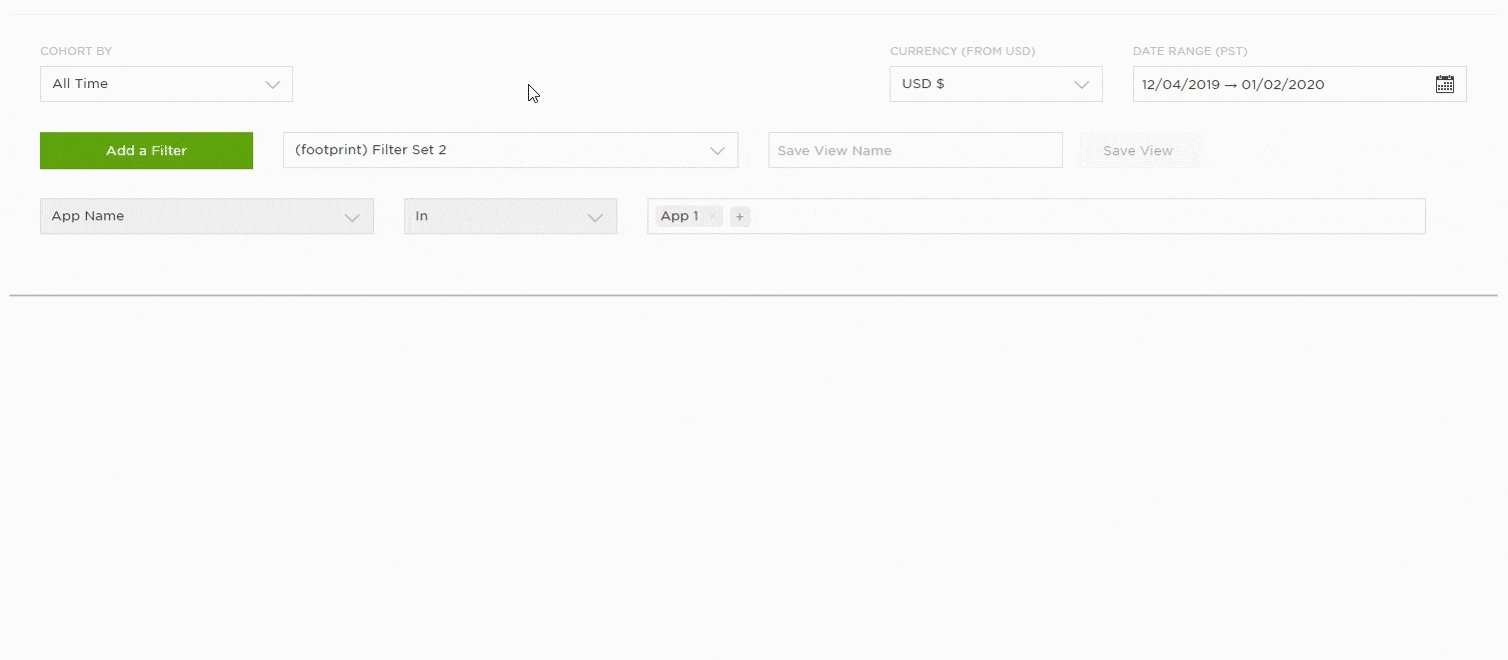
Funnel Overview
Think of the Funnel tool within Kochava as an actual funnel. The first event selected will serve as a starting point by which all subsequent events will be measured. Events should be selected to follow the “user paths” through the app.
Events are displayed on the left in descending order. The Event Totals, Percentage of previous event, Percentage of users lost from funnel and the Percentage of users still within the funnel are displayed on the right.
NOTE: When leveraging Cross App functionality, the event data that is consistent between each app of the App Name filter will be displayed within the Funnel. For more information about adding apps using the filter feature, refer to our Analytics Page Tools support documentation.
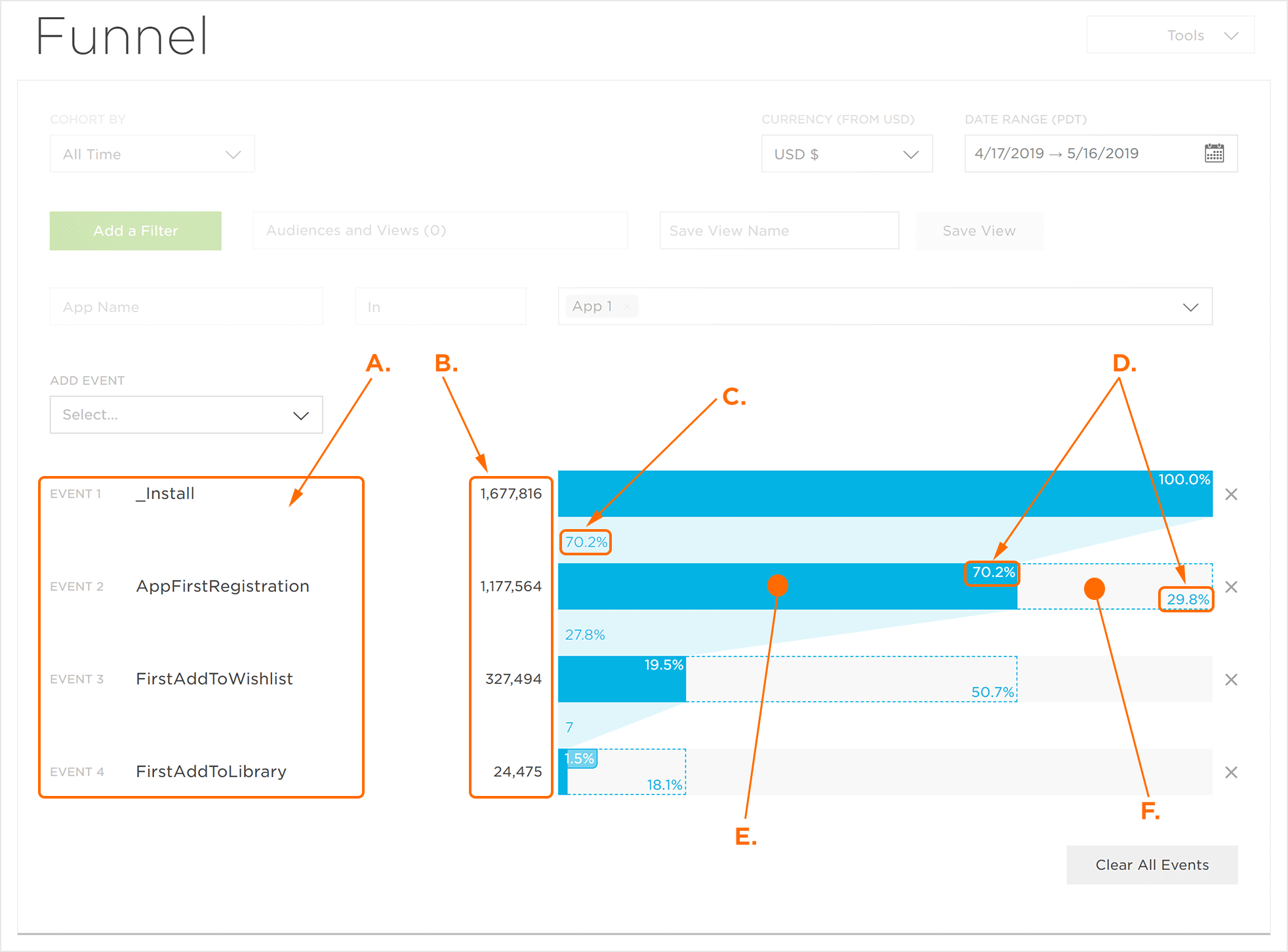
B. Unique Users
C. Funnel Percentage of Previous Events
D. Category Percentage
E. Users in Funnel
F. Users Lost from Funnel
Adding Events to the Funnel
By default, no events are active when the Analytics Funnel is initially loaded.
NOTE: When leveraging Cross App functionality, only the events that are consistent between each app of the App Name filter are eligible to be displayed within the Funnel. For more information about adding apps using the filter feature, refer to our Analytics Page Tools support documentation.
- From the Add Event drop-down menu, Select the desired initial event.
- From the Add Event drop-down menu, Select any additional desired event.
- Repeat Step 2 as needed until all desired events are added.
NOTE: Once the first event is added, a graphical representation of the event quantity and percentage will be generated. The initial event will always display a percentage value of 100%, and every subsequent event will be based upon its relationship to the initial event.
NOTE: In order to visualize high volumes of data quickly, Kochava utilizes [itg-glossary glossary-id=”4131″]Theta Sketches[/itg-glossary] which are based off unique users as the basis for Funnel visualization. For precise numbers use the Explorer tool.
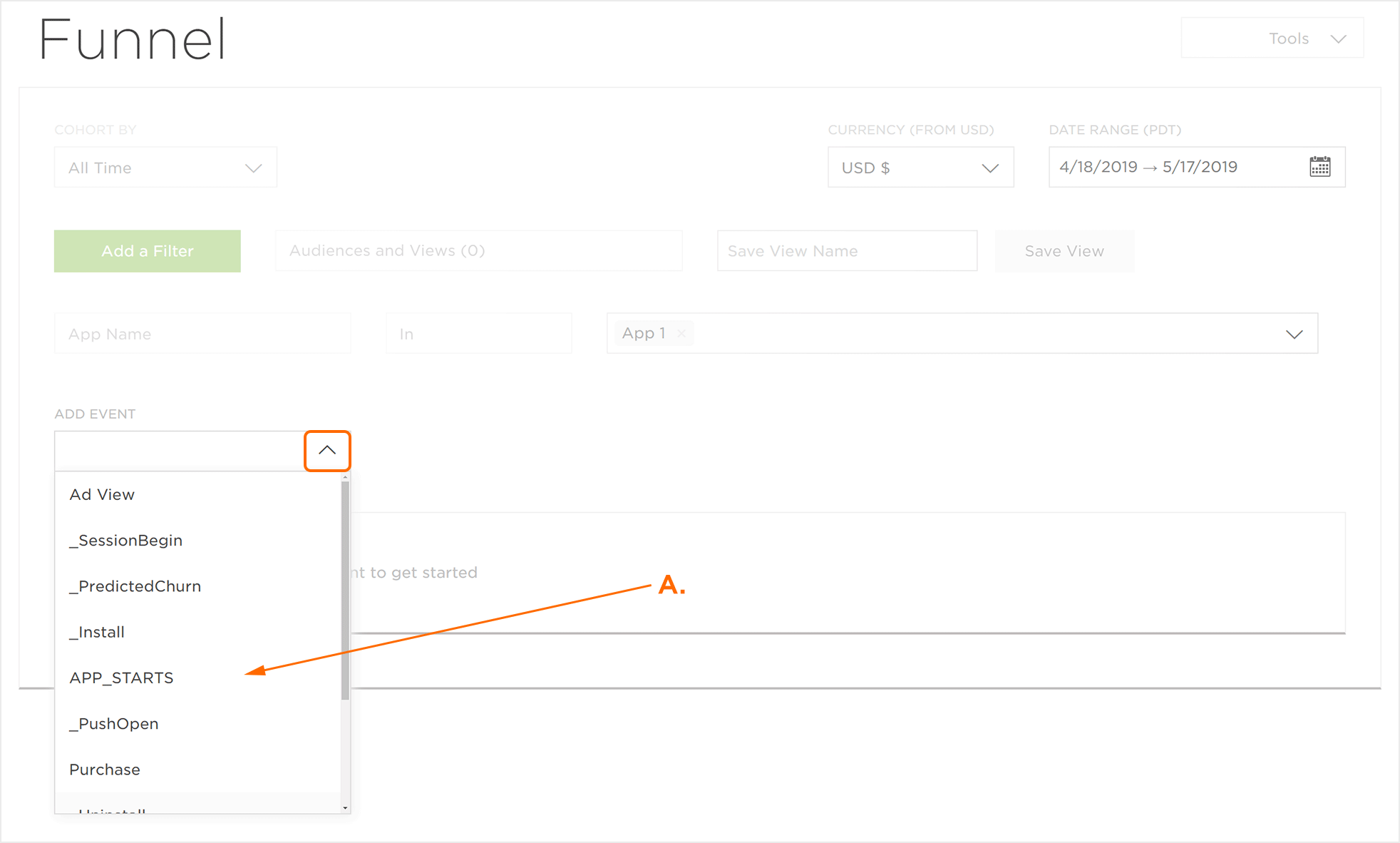
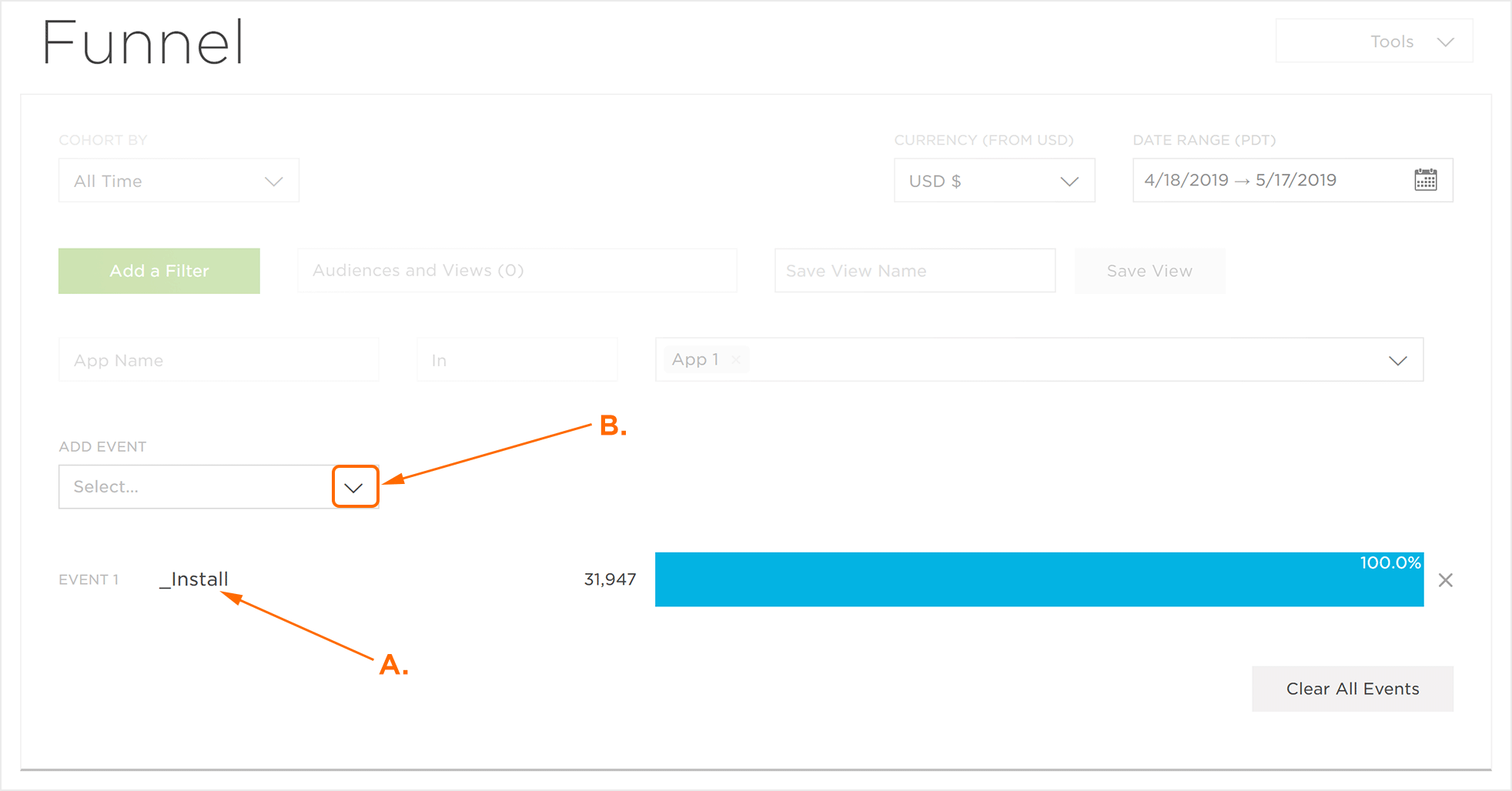
B. Click to add additional Events
Removing Events from the Funnel
Removing events from the Funnel can be accomplished in one of the following ways:
- To remove one event at a time, Click on the “X” next to the event you want to remove.
- To clear all events Click Clear All Events.
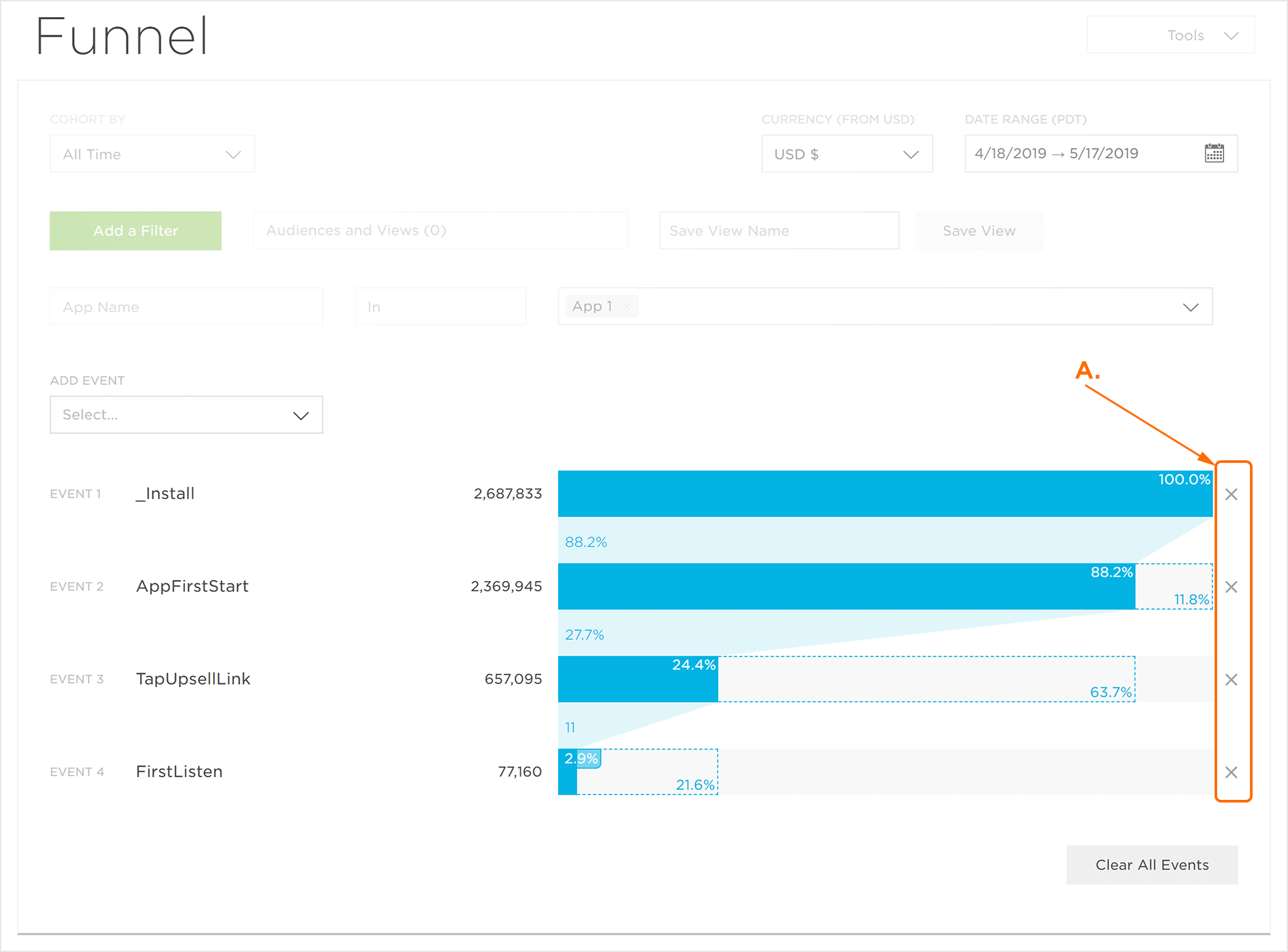
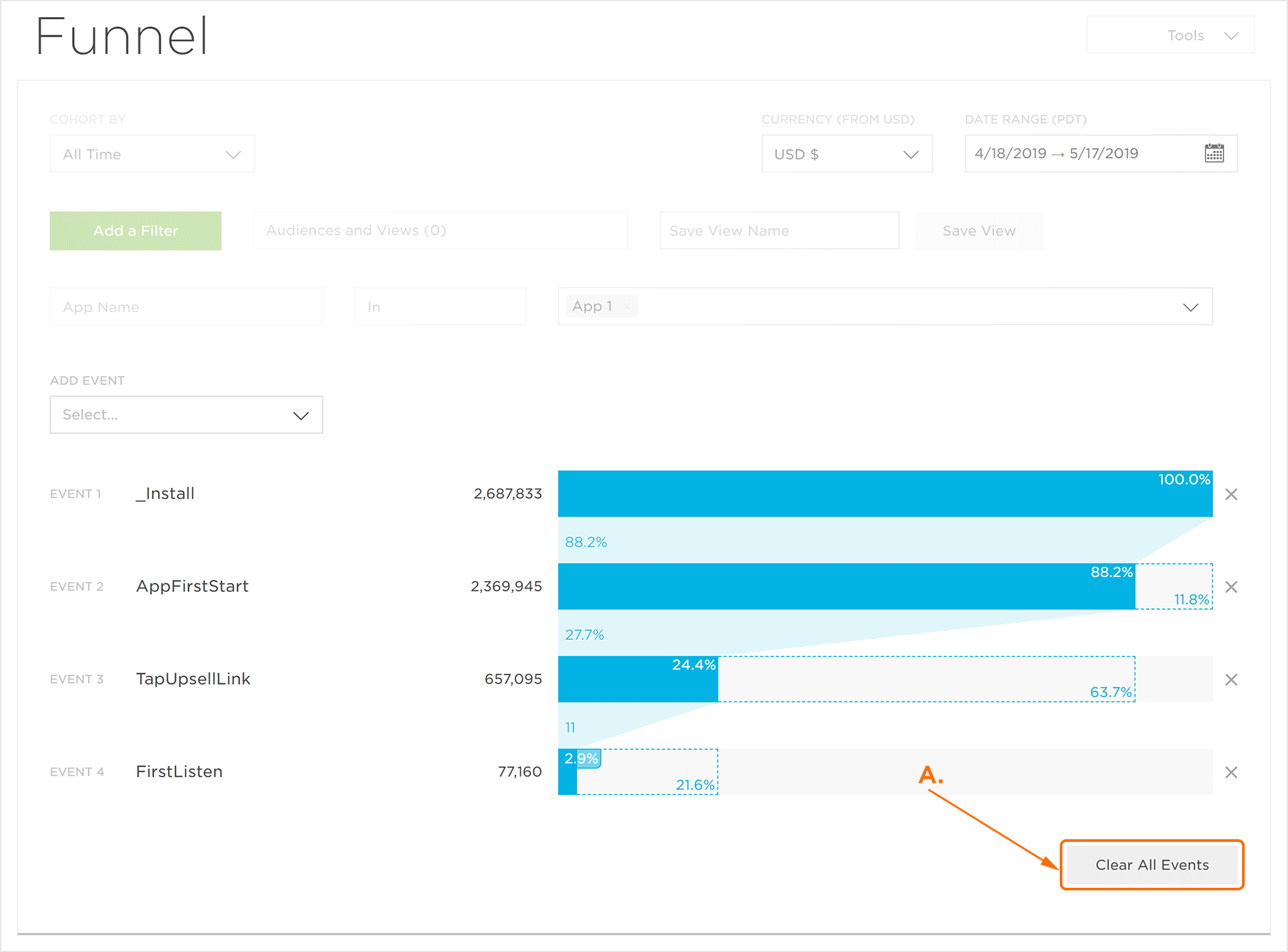
Explore the Funnel
The Funnel events can be further analyzed through the use of the Explorer page.
- Determine the Event to explore.
- Click on the blue section (users who met the criteria) or the light-grey section (users who fell outside the criteria):
- Event > Devices in Funnel > Explore
- Event > Lost from Funnel > Explore
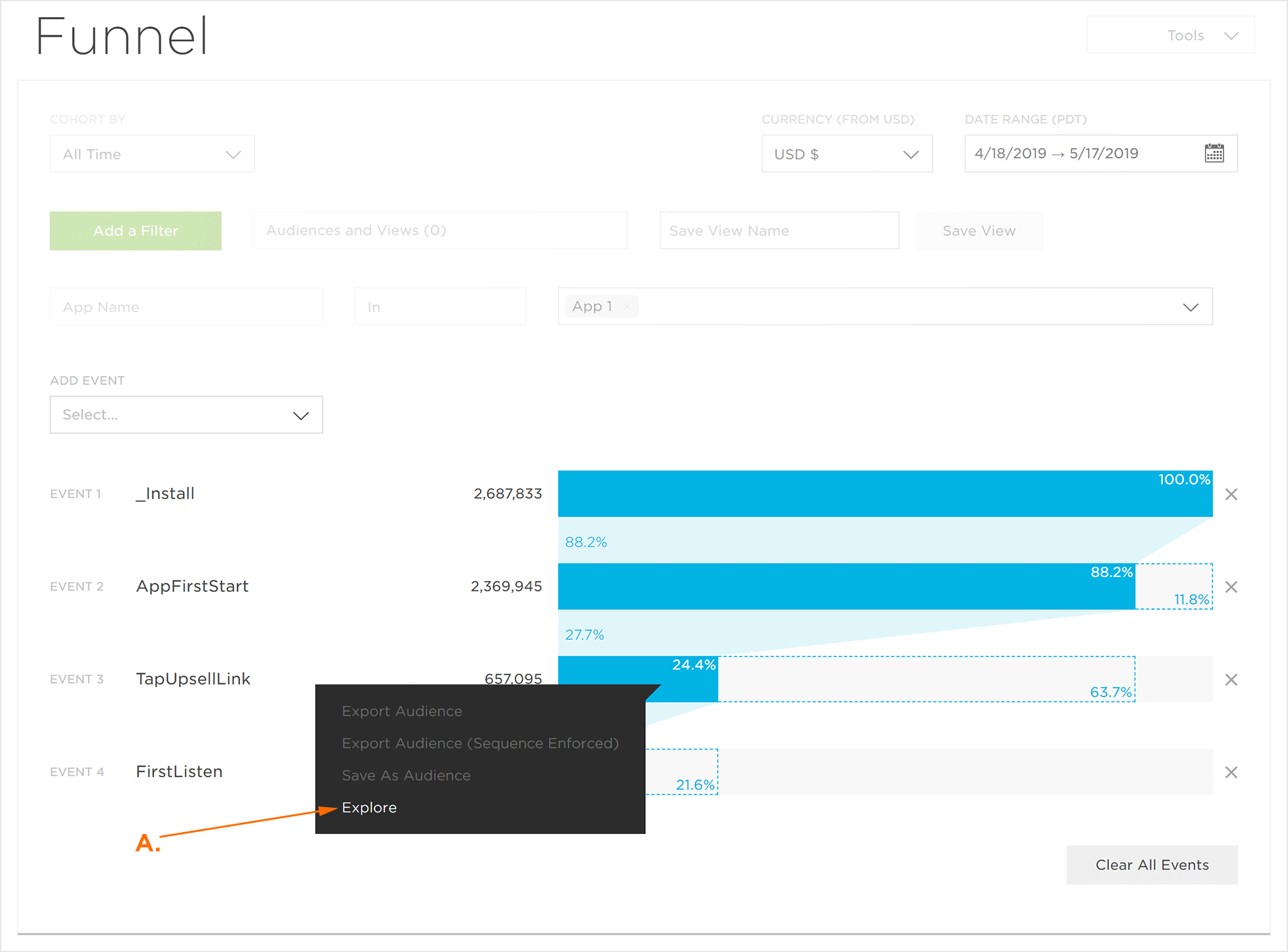
Exporting Audiences
The device IDs for both the users who fell within the funnel event and those that fell out of the funnel events may be exported or saved to be used with Engagement campaigns.
NOTE: In order to utilize an audience within Engagement campaigns, Push must be enabled. For more information on enabling Push, refer to our Create/Edit Apps support documentation.
NOTE: Kochava will generate a list of the device IDs and export that list in a CSV format. If multiple App data is being displayed within Analytics, a zip file will be created with each app’s device IDs listed in separate CSV files. For more information about adding additional app data to Analytics, refer to the Filters section below.
- Determine the set of Device IDs to export.
- Click on either the blue section (users who met the criteria) or the light-grey section (users who fell outside the criteria):
- Event > Devices in Funnel > Export Audience.
- Event > Lost from Funnel > Export Audience.
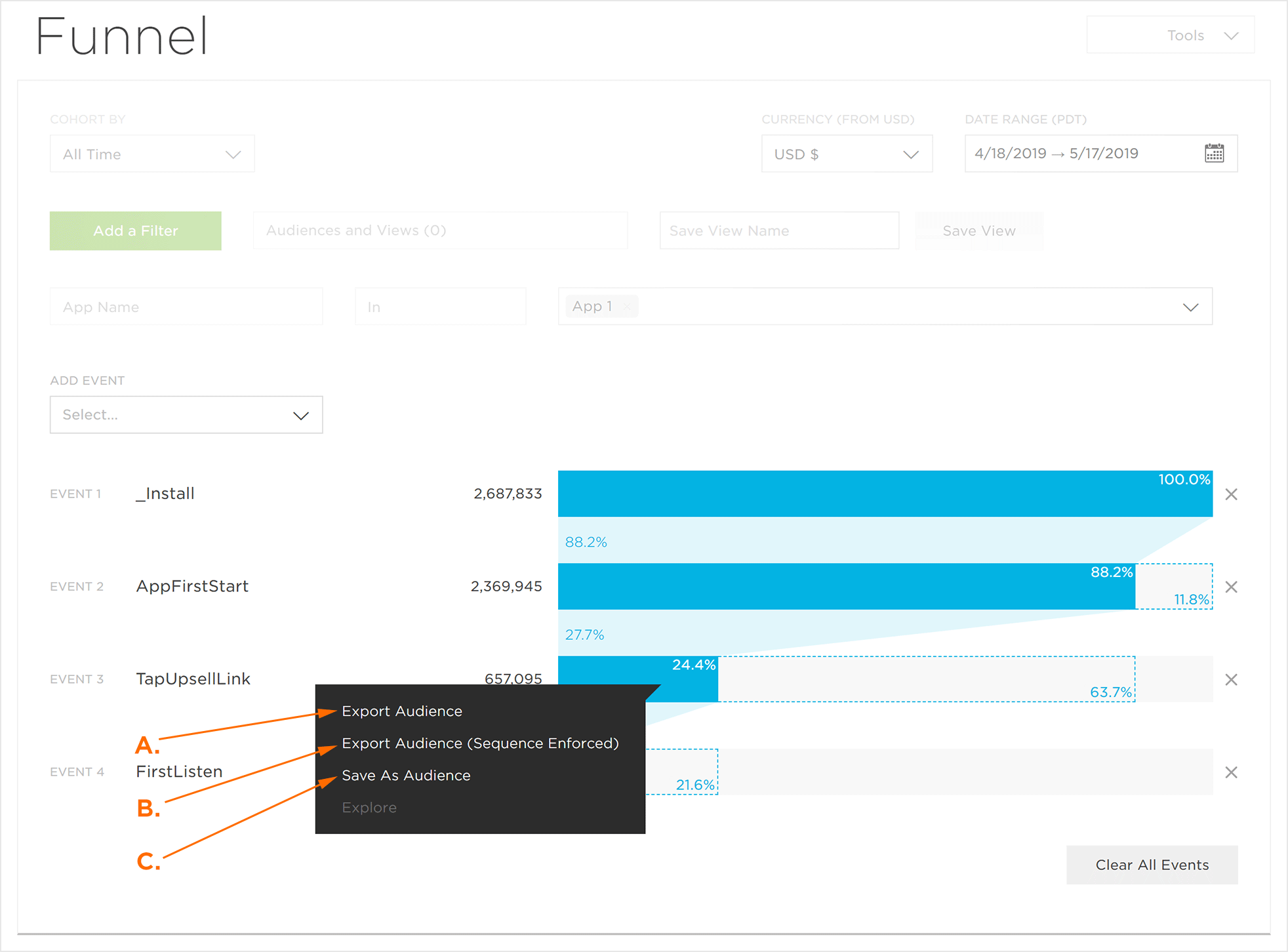
B. Click inside the funnel>Export Audience (sequence enforced): Resulting device ID’s may differ from funnel view which is built using Theta sketches where event sequence order is not enforced.
C. Click inside the funnel>Save as Audience to save the audience segment to Engagement.
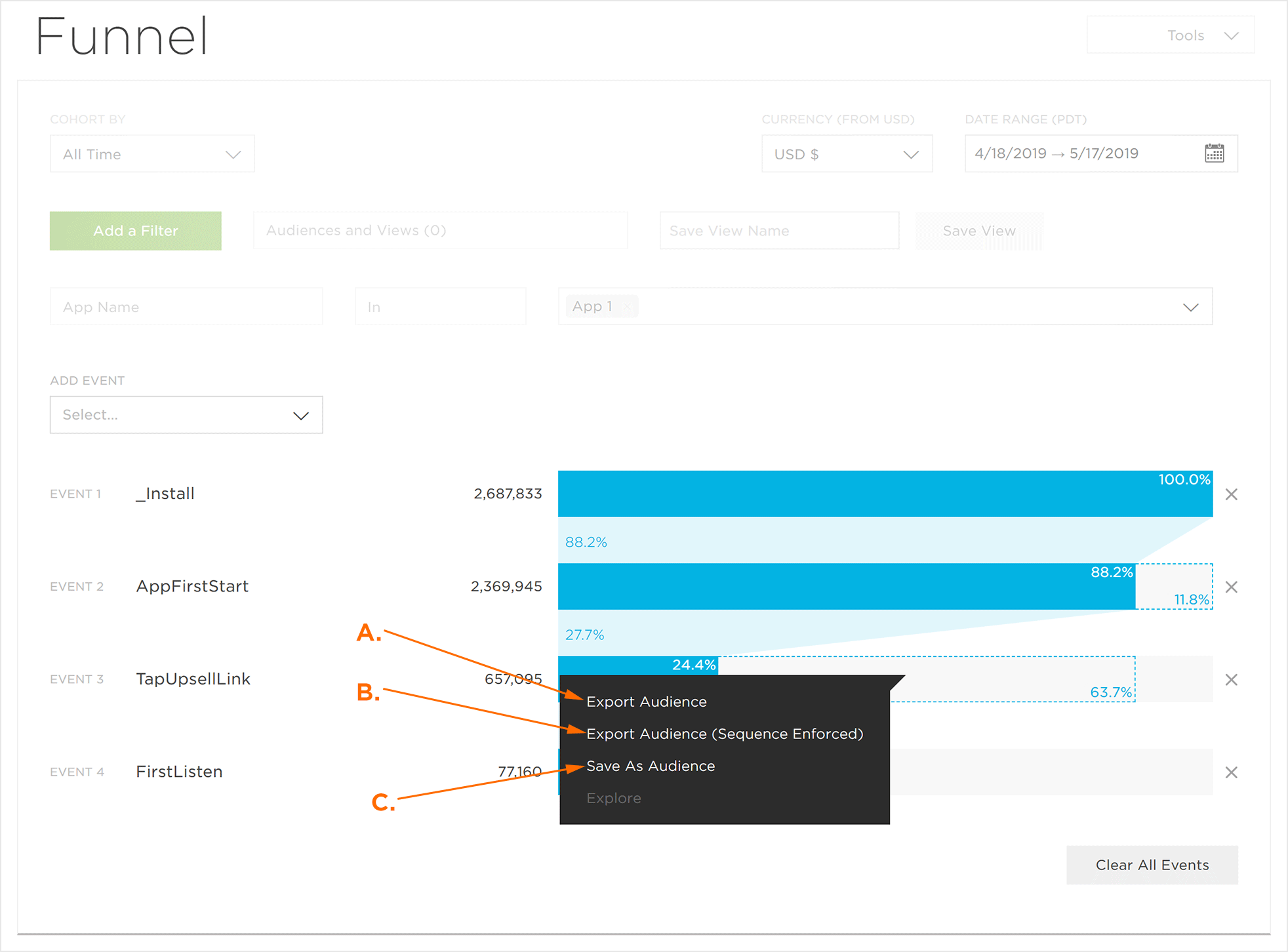
B. Click outside the funnel>Export Audience (sequence enforced): Resulting device ID’s may differ from funnel view which is built using Theta sketches where event sequence order is not enforced.
C. Click outside the funnel>Save as Audience to save the audience segment to Engagement.
NOTE: Once Export Device IDs has been selected, a pop-up window will appear notifying of the Device ID export, the email address which will be sent a link to the Device ID list and a button allowing the status of the export to be checked.
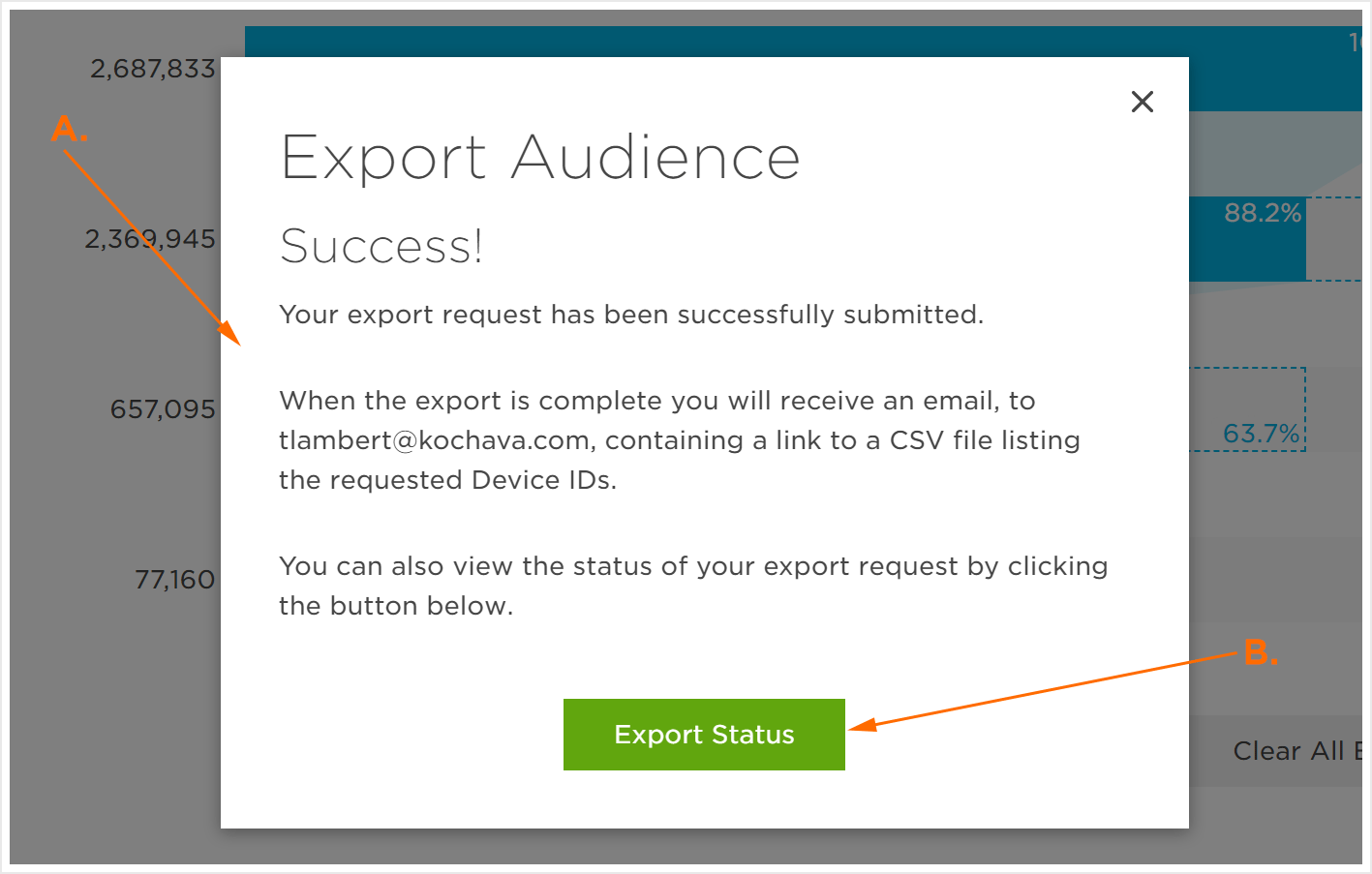
B. Click on View Export Status to see the status of the export.
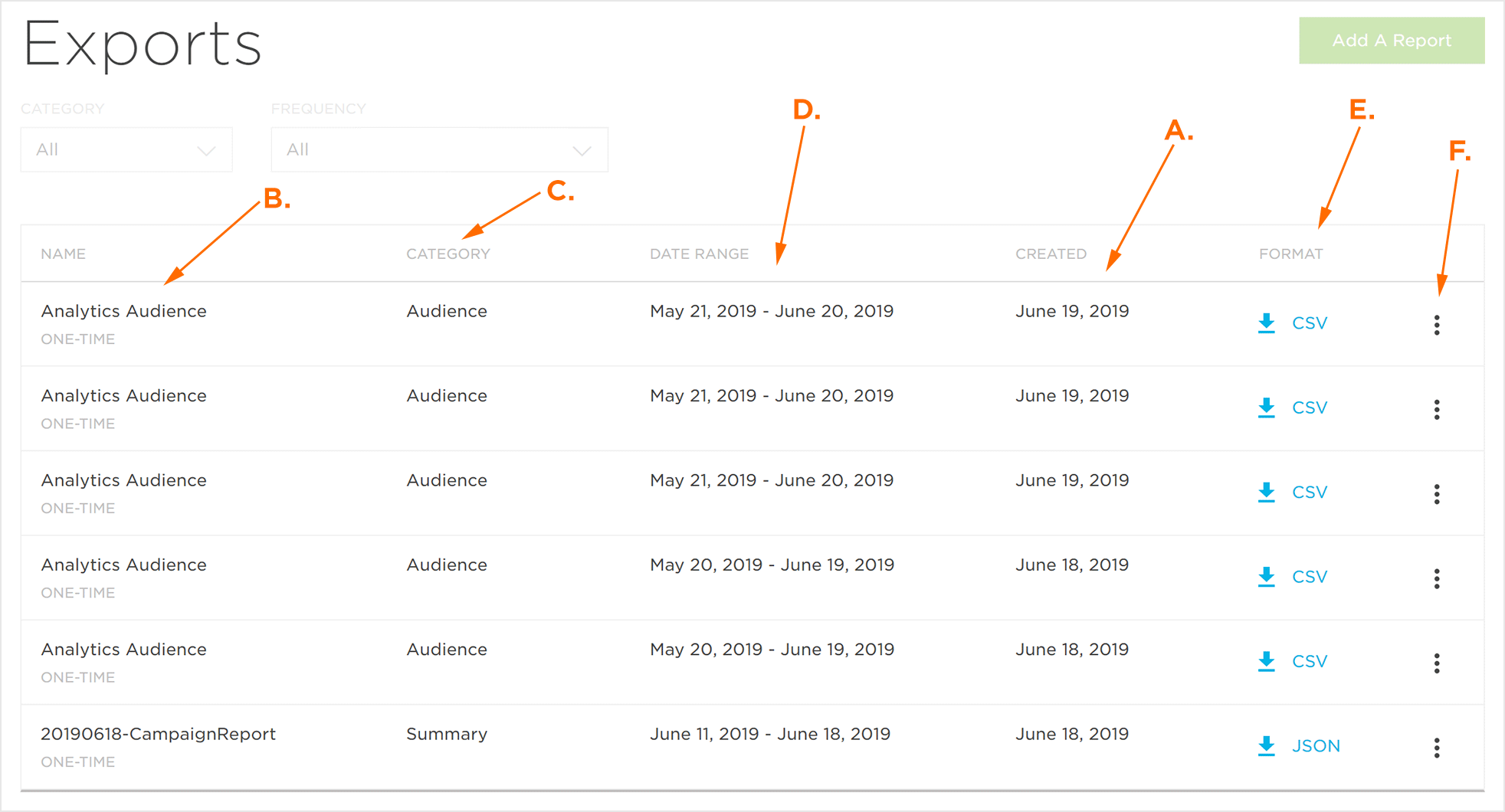
B. The Audience Name.
C. The Export Category.
D. The date range of the export.
E. The format of the export.
F. Exports tool menu.
NOTE: Once Save as Audience has been selected, a pop-up window will appear providing the Engagement Audience settings. For more information about saving an Engagement Audience, refer to our Engagement Audiences support documentation.
